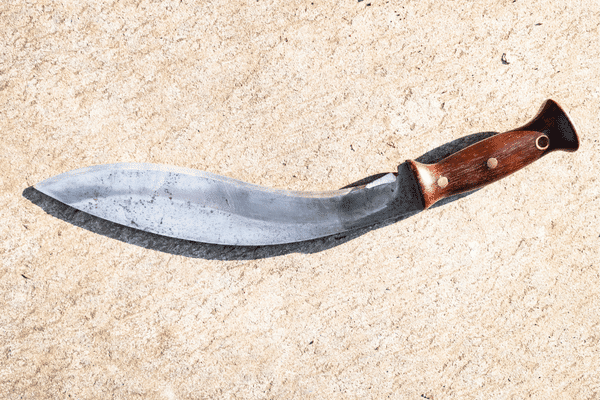The Evolution of Spears: Exploring Polearms, Javelins, and the Qiang.
Unveiling the Ancient Weaponry
Spears, with a lineage stretching back to prehistoric times, stand as enduring symbols of human ingenuity and adaptability. This article delves into the fascinating world of Spears, exploring the diverse forms they take, from the traditional polearms to the precision of javelins and the cultural significance of the Chinese Qiang.
1. Spears: An Enduring Legacy
Historical Roots: The spear's history is interwoven with the very fabric of human civilization. Used for hunting and protection, its simplicity and effectiveness made it a staple tool across cultures.
Design Variations: The fundamental design of a spear, featuring a pointed head atop a shaft, has seen numerous variations. Different civilizations crafted spears with unique shapes and sizes, tailored to specific purposes, whether for thrusting or throwing.
2. Polearms: Extending Reach on the Battlefield
Evolution Beyond the Basics: Polearms represent an evolution of the traditional spear, emphasizing an extended shaft for increased reach. This category includes an array of weapons, from the halberd to the glaive.
Versatility in Battle: Polearms found favor on the battlefield, providing soldiers with the ability to engage adversaries from a distance. Their versatility made them effective against cavalry and infantry alike.
Iconic Presence: The iconic imagery of soldiers wielding polearms became synonymous with historical battles, showcasing the weapon's dominance in medieval warfare.
3. Javelins: Precision in Flight
Designed for Throwing: Javelins, distinct from traditional thrusting spears, were engineered for throwing. Their lightweight and aerodynamic design allowed for precision in flight.
Athletic Competitions: In ancient Greece, javelin throwing emerged as a prominent sport in athletic competitions. Beyond the battlefield, javelins showcased their prowess in the hands of skilled athletes.
Tactical Advantage: Javelin short spear offered a tactical advantage, allowing skirmishers to disrupt enemy formations before engaging in close combat. Their use was not only strategic but also showcased the importance of ranged weaponry.
4. Qiang: The Elegant Chinese Spear Tradition
Cultural Distinction: The Qiang, a traditional Chinese spear, distinguishes itself with a unique leaf-shaped blade and a rich history entwined with Chinese martial arts.
Martial Arts Heritage: In martial arts, particularly Wushu, practitioners master the Qiang, incorporating fluid movements and precision techniques into their routines. The Qiang's elegance in combat reflects its cultural significance.
Symbolism and Rituals: Beyond martial arts, the Qiang carries cultural symbolism. It is often featured in traditional dances, ceremonies, and rituals, underscoring its role beyond the battlefield.
5. Evolution in Materials and Construction
Ancient Crafting Techniques: Historically, spears were crafted from materials such as stone, bone, and wood. As metallurgical techniques advanced, bronze and iron became prevalent, shaping the weaponry of their time.
Modern Adaptations: Contemporary spears leverage advanced materials like steel, aluminum, and carbon fiber. This evolution enhances durability, strength, and overall performance, catering to modern demands.
Customization for Purpose: Modern spear craftsmen blend tradition with innovation, creating specialized versions tailored for historical reenactments, sports, hunting, or ceremonial use.
6. Preserving Heritage and Igniting Interest
Historical Reenactments: Enthusiasts globally participate in historical reenactments, breathing life into the past and showcasing the prowess of various spears. These events serve as living tributes to the historical significance of these weapons.
Educational Initiatives: Museums and educational programs play a pivotal role in preserving the cultural and historical significance of spears. Their efforts ensure that the legacy of these weapons endures, educating future generations.
Modern Applications: Spears, despite their ancient origins, find utility in contemporary settings. Specialized versions are used in sports, hunting, and survival training, showcasing the enduring practicality of these versatile weapons.
Conclusion
The evolution of spears, from the basic thrusting, implement to the sophisticated Polearms, precision javelins, and culturally significant Qiang mirrors the diverse tapestry of human history. As we delve into their roles on battlefields, in sports arenas, and within cultural traditions, it becomes evident that the legacy of spears is not confined to the past. Instead, it lives on through the enthusiasts who engage in historical reenactments, the educational programs that preserve their history, and the modern adaptations that continue to find relevance in our ever-evolving world. Spears, in all their forms, stand as timeless artifacts, bridging the gap between ancient craftsmanship and contemporary ingenuity.





Comments
Post a Comment